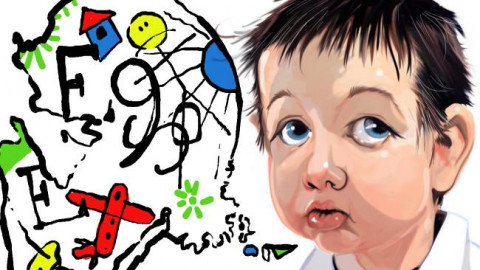
Australia needs a better system for diagnosing autism in the wake of dramatically rising prevalence rates that The Weekend Australian correctly reports have contributed to a demand in the school system for support that is not available (“Crisis in the classroom”).
It is beyond dispute that the numbers of children diagnosed with autism spectrum disorder have risen considerably over the past three decades. This trend is not unique to Australia and is observed across the Western world.
Much of this increase is because of greater awareness and an expansion of the concept of ASD to recognise individuals with less severe behaviours.
The rise in ASD numbers has stretched public and private services across Australia. Frighteningly long waiting lists are commonplace at each step along the ASD journey — from early intervention and school support to assisted adult living.
But it is the first step in this process that provides the biggest problem: diagnosis.
Medical conditions are typically diagnosed based on clear biological observations. A diagnosis of diabetes, for example, is based on fasting blood sugar levels. Developmental disorders are a different beast altogether. In the absence of clear biological markers, ASD is diagnosed based on behaviours defined in international guidelines such as the Diagnostic and Statistical Manual of Mental Disorders, or DSM.
A diagnosis based on behaviour is an inherently subjective task. The dividing line we draw between a “normal” and a “clinical condition” is often blurry and can lead to considerable debate. This subjectivity has undoubtedly resulted in more individuals being diagnosed with ASD.
But how much have Australia’s diagnostic services also contributed to the rise? Considerably.
First, diagnostic systems are highly fragmented. Disability in Australia has traditionally been the domain of each state and territory. While each jurisdiction adheres to the DSM or other international guidelines, the way the diagnoses are achieved differs wildly between states. Some states mandate that a diagnosis of ASD must involve a multidisciplinary and highly trained team. Other states allow ASD diagnoses to be made by a sole practitioner, who may never before have performed a diagnostic assessment. This system is clearly open to abuse.
Second, the elephant in the room: funding. There is mounting evidence that public health policies have contributed to the rise in ASD numbers. Therapeutic services for people with ASD are often highly expensive, with many families spending more than $50,000 a year to access gold-standard services. The financial burden on families touched by ASD is a major problem, and the more we talk about this the better.
In recent times, many governments around the world, including in Australia, have laudably provided public funds to help families with these costs. However, eligibility for this funding is often tied to an individual receiving a diagnosis of ASD, and these same resources may not be available for children with other disabilities, such as language disorders. The possibility of a family receiving financial assistance provides a clear incentive for clinicians to diagnose a child with ASD over other conditions.
A study in Minnesota found the beginning of an upsurge in ASD diagnoses (1992) came the year after the official inclusion of ASD in the federal funding and reporting legislation. Similarly, a study from British Columbia identified a noticeable spike in diagnoses following the introduction of a federal government policy that provided funds directly to families of children with ASD to help cover intervention services.
There is no hard data for a similar trend in Australia, but plenty of anecdotal evidence. A 2005 study of pediatric diagnostic practices in Queensland showed there are occasions when a diagnosis of ASD is made despite uncertainty about a child’s symptoms.
This is an issue that inflames tempers and often leads to misplaced anger directed against families and clinicians. What is less often discussed is why this may be occurring.
People are not seeking an ASD diagnosis to rort a system for subsidised therapy for their child. A diagnosis of ASD is often a major turning point for the whole family, and one that is never taken lightly by clinicians or families.
People seek a diagnosis of ASD because their beloved child is developing differently, and they will do anything to help them. If this means that diagnostic guidelines are bent to help their child receive services they cannot otherwise afford, then they see this as a price worth paying.
The National Disability Insurance Scheme is a true game changer for families of children with developmental disorders. The scheme will allocate a level of funding based on needs, and not necessarily on diagnosis. This means the families of children who are developing differently may not necessarily have to go seeking an ASD diagnosis to receive the support they need and deserve.
The NDIS provides the first occasion when the whole of the Australian disability sector will be singing from the same song sheet. This is Australia’s chance to address the variability between our state and territory disability systems and determine national guidelines for ASD diagnosis.
National guidelines will allow us to ensure minimum standards for each ASD diagnosis, and give families, clinicians and the broader community the confidence of a sustainable NDIS.
This is an opportunity that we simply cannot let pass.
Andrew Whitehouse is professor of child development at the Telethon Kids Institute (University of Western Australia), and a program director in the Cooperative Research Centre for Living with Autism.